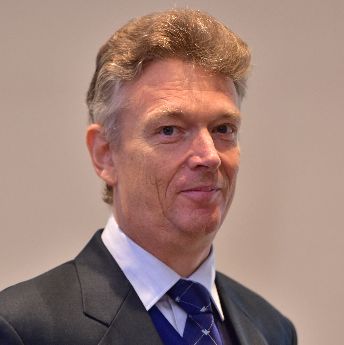The Ebb and Flow of Customer-Centricity in Financial Inclusion Part 3 – What Happened and Where Are We Today?
 by Graham Wright and Evelyn Stark
by Graham Wright and Evelyn Stark Feb 10, 2016
Feb 10, 2016 4 min
4 min
The blog highlights MicroSave’s journey till now in propagating Customer-centric approach and how we are further building on it.
In the previous blog “The Ebb and Flow of Customer-Centricity in Financial Inclusion Part 2 – Beyond the Basics” we discussed the details of building a customer-centric, or market-led financial service provider – and the intricate jigsaw puzzle of skills, processes, incentives, planning and execution required to pull it off.
 Results
Results
So, did all of our action research partners become client-centric, market leaders? Are clients in their countries receiving amazing customer service and great products? The truth is that some institutions are better at delivering client-centric products than others. As a result of the project our ten action research partners developed or refined 9 savings products and 11 loan products. At the end of 2007, when the project closed and MicroSave transformed into a consulting company, 373,705 customers had loans from our action research partners; the outstanding balances on these loans were $300 million; 2.5m people had savings accounts an overall outstanding balance of $530 million.
Over the same period MicroSave trained more than 51 Certified Service Providers and over 1,000 staff in marketing, R&D, operations and risk management departments. Many of these people remain in the industry (if not in the same jobs). These people and institutions have a deep understanding of being “market-led” and we need to build on the talent and experience the industry already has.
We have all seen great research on what clients want and need and we’ve seen some really great innovations in being able to deliver simple products and to design great products that use behaviour and psychology to encourage client success. What we haven’t seen is many of these great designs reaching scale. The reality is that the difficult part of delivering great products that truly help clients meet their needs and goals is in the hard, less-glamourous work of system and organisational change.
Where are we today?
Some of our partners “stopped” being market-led when the MicroSave team, or the CEO or product champion left. Being a client-centric organisation is a supply side strategic choice – and it is an ongoing business practice. It requires constant attention, just like keeping up with IT, regulations, financial performance.
Being market-led or customer centric is not a project. It is not a BE class, nor a donor-funded HCD exercise, nor one department. It’s a continuous process of acting and reacting to the market, to the products your competitors are offering your clients, to the complaints and desires of your customers; and to your numbers. It is all about using your data to measure not just your bottom line, but to understand client behaviour. It is about a commitment to constantly seek to understand your customers’ perceptions, needs and aspirations … as well as the elements of your services with which they struggle … and to respond to these by changing processes, marketing and communication, staff training and incentives … and sometimes products. It is also about understanding customers at the economic and social level, and not to study them through product lenses. In fact, when we redefined microcredit years ago, and came up with microfinance, we painted microfinance as the four core products (transactional, savings, credit and insurance). In a way, we defined microfinance as a product approach, and took the focus away from the customer, the people we deemed as our target audience.
Recently Social Performance Management has begun to encompass many of the key essentials of a market-led and customer focused approach. SPM recognises that satisfied staff inspired by a clear, board and management-endorsed mission and strategy that is incentivised by remuneration systems rewarding a customer focus, are essential to achieve an effective social and financial bottom-line. Such a strategy must, of course, necessarily encompass appropriate products and delivery systems.
Given the recent renewed, and welcome, attention to client-centricity, complete with new acronyms (BE, HCD) and new tools (design thinking, financial diaries, GIS maps, big data, algorithms, rapid proto-typing), we thought we’d remind people that we as an industry are not starting from scratch! We’ve had experiences (good and bad) that we can build on to ensure that more and more financial institutions take a strategic rather than project approach and we really can serve the millions of people outside the financial mainstream.
We also want to remind ourselves that we have not yet arrived at the end of the journey, where customer centric financial service providers deliver great customer experience to customers who use the products and services. We still have to solve a few more challenges. How do you make the business case work? How do you ensure that we use a granular understanding of the economic and social lives of our customers and translate that into financial services that they continuously want to use? How do you empower customers to understand what you offer, to choose the right solution and to use it with confidence? How do you build trust between customer and financial service provider? Our understanding is that the concept of customer centricity as a supply side strategy is the right path to solve these challenges. However, we need to go deeper in embedding customer centricity as a business model in financial service providers. As mentioned, this means that we need to enter the worlds of organisational change, and the management of change. We need to learn from leading customer centric firms in other industries, and from trail blazers in the financial inclusion world. Indeed, the quest started by MicroSave and partners, many years ago, is far from complete.
This blog was first published at Center for Financial Inclusion
Written by


Leave comments